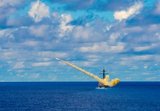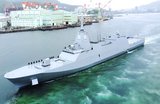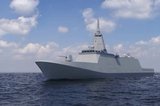First 3D metal part for US Navy vessel
Huntington Ingalls Industries’ Newport News Shipbuilding has delivered the first 3D-printed metal part for installation on the US Navy’s aircraft carrier USS Harry S Truman, the company announced on the 29 January.
The part – a piping assembly – will be evaluated for a one-year period onboard the nuclear-powered aircraft carrier. In 2018, NAVSEA approved the technical standards for 3D printing after extensive collaboration with the company and industry partners that involved the rigorous printing of test parts and materials, and extensive development of an engineered test programme.
Charles Southall, VP of engineering and design, Newport News Shipbuilding, said: ‘We are pleased to have worked so closely with our navy partners to get to the point where the first 3D metal part will be installed on an aircraft carrier.
‘The advancement of additive manufacturing will help revolutionise naval engineering and shipbuilding. It also is a significant step forward in our digital transformation of shipbuilding processes to increase efficiency, safety and affordability.’
More from Naval Warfare
-
![NATO tests use of “undetectable, jam-proof” laser communication in maritime scenarios]()
NATO tests use of “undetectable, jam-proof” laser communication in maritime scenarios
As part of its effort to better prepare its capabilities for operations in contested and congested scenarios, NATO evaluated a Lithuanian ship-to-ship terminal designed to not be susceptible to enemy interference.
-
![Future of the Canadian Patrol Submarine Project is still unclear]()
Future of the Canadian Patrol Submarine Project is still unclear
The Canadian government remains tight-lipped on the timeline and funding required for the next steps of its Canadian Submarine Patrol Project, which should offer improved capabilities for the country’s navy.
-
![Mitsubishi eyes future with Australia’s Mogami selection]()
Mitsubishi eyes future with Australia’s Mogami selection
With Australia’s selection of the Mogami-class for Project Sea 3000, Mitsubishi is investigating local production in the next decade as potential export opportunities emerge.
-
![Thales’ new Sonar 76Nano could equip UK Royal Navy on anti-submarine warfare missions]()
Thales’ new Sonar 76Nano could equip UK Royal Navy on anti-submarine warfare missions
The new sonar is designed to equip uncrewed underwater vessels, with the potential to be used by the Royal Navy for its Atlantic Bastion and Atlantic Net missions.























